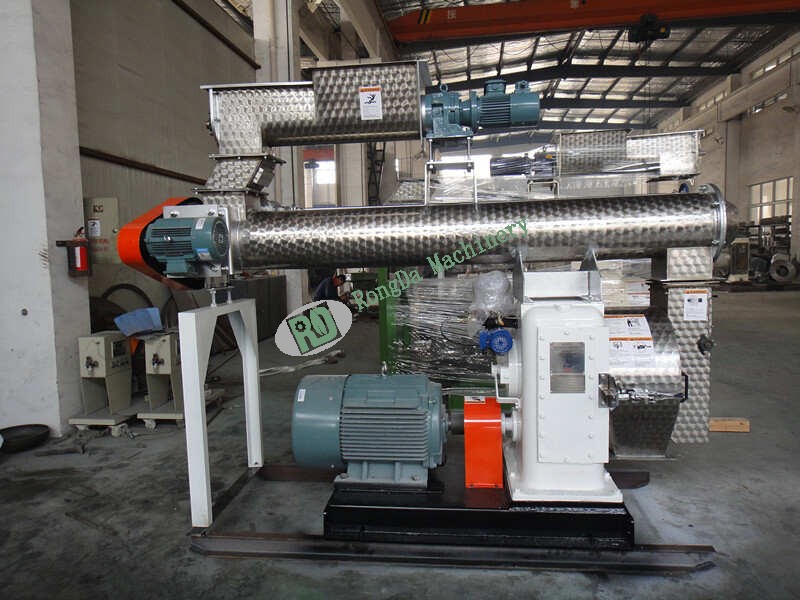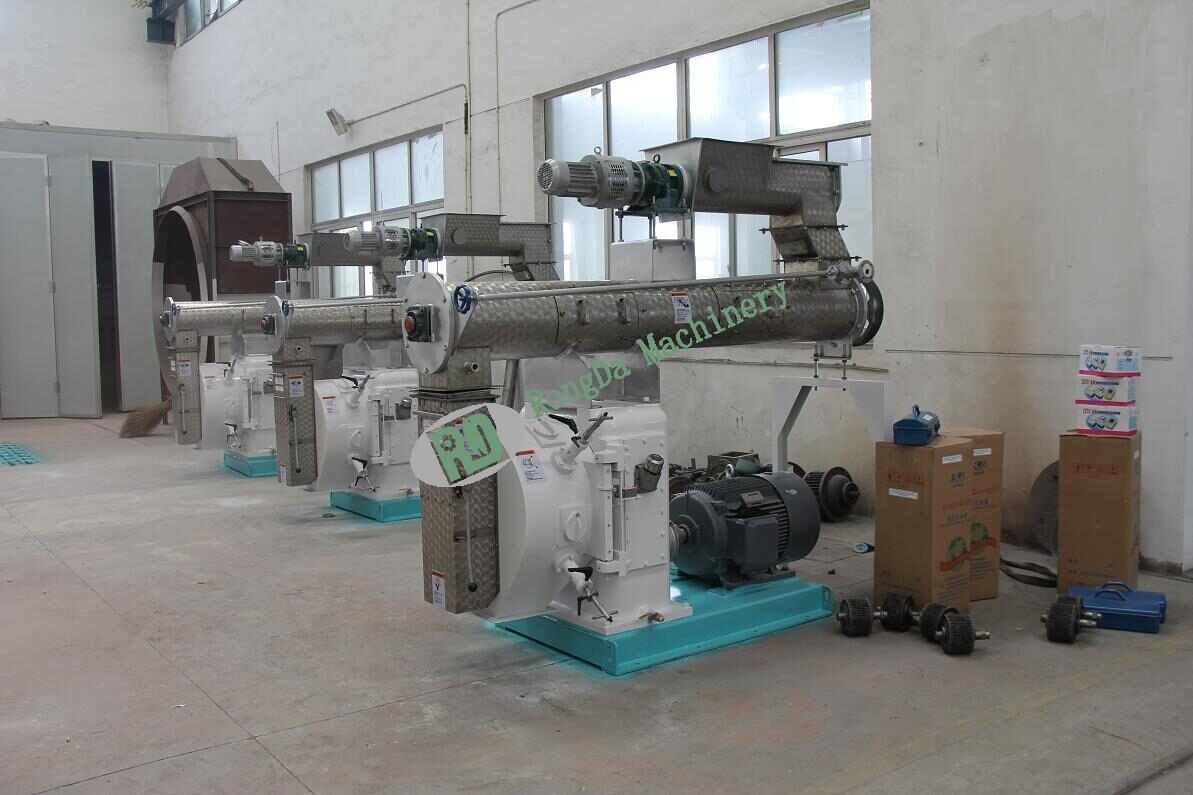Welcome to Rongda Machinery Co., Ltd
Toggle Navigation
Modern poultry farming demands peak efficiency to remain competitive and sustainable. Central to achieving this is the strategic use of poultry feed machines. These specialized devices have transformed feed management from a labor-intensive chore into a precise, automated process. By ensuring consistent, timely, and portion-controlled delivery of nutritionally balanced feed, these machines directly enhance bird health, growth rates, and overall flock uniformity. Beyond animal welfare, they are critical tools for minimizing costly feed wastage and maximizing resource efficiency, making them indispensable in today's high-output farming operations.
This guide explores the diverse range of poultry feed machines available, explaining how they function, the tangible benefits they deliver, and key factors farmers must weigh when selecting equipment. We'll also cover essential maintenance routines and troubleshooting common challenges, concluding with a look at emerging technological advancements shaping the future of feed automation.

H2: Understanding Different Poultry Feed Machine Types
Selecting the appropriate feed machine hinges on specific farm needs: flock size, housing design, feed formulation (mash, crumble, pellet), desired automation level, and budget. Here's an overview of the primary types:
Continuous Feeders: Designed for large-scale operations, these systems provide an uninterrupted flow of feed. Typically utilizing augers or chain mechanisms running along feed troughs, they replenish feed as birds consume it. This "ad-lib" feeding is ideal for broilers and growing birds needing constant access to nutrition.
Batch Feeders: Operating on a scheduled basis, batch feeders dispense predetermined amounts of feed at set intervals. This method promotes controlled feeding patterns, often preferred for breeder flocks or layer hens to manage body weight and optimize egg production. They range from simple manual-fill hoppers to sophisticated programmable systems.
Feed Dispensing Choppers/Mixers: While not always primary delivery systems, these machines are vital for preparing specific feed types. Choppers finely process forage or fibrous materials. Mixers ensure uniform blending of various feed ingredients or supplements before distribution via other feeder types, guaranteeing consistent nutrient intake.
Pellet Feeders: Specifically engineered to handle durable pelleted feed efficiently. Their design minimizes pellet breakdown (fines) during dispensing, crucial because fines are often wasted. They are commonly integrated with automated chain or auger systems but can also be standalone units like specialized pan feeders optimized for pellets.
H3: How Poultry Feed Machines Operate: Core Principles
While designs vary, the core function remains consistent: deliver the correct feed quantity to the right birds with minimal waste. Key components and principles include:
Feed Storage/Hopper: Holds bulk feed, protecting it from contamination. Size varies with farm scale.
Delivery Mechanism: This is the heart of the system:
Augers: Rotating screws efficiently move feed horizontally or vertically through tubes.
Chains: Drag feed along troughs via moving links within a track.
Conveyor Belts/Pans: Transport feed along a path, less common but used in specific designs.
Gravity: Utilized in simple pan or trough feeders where feed flows from a hopper above.
Dispensing/Regulation: Controls how much feed reaches the birds. Methods include adjustable flow gates, sensitive trigger mechanisms on pan feeders, or precise timing controls in automated batch systems.
Troughs/Pans: The point of consumption. Design aims to prevent roosting, minimize spillage, and allow easy bird access. Pan feeders are popular for their efficiency in reducing waste.
Control System: In automated setups (continuous, advanced batch), this includes timers, sensors (e.g., monitoring feed levels or auger torque), and programmable logic controllers (PLCs) managing start/stop times and feed quantities.
H4: Tangible Benefits of Implementing Poultry Feed Machines
Investing in the right feed automation yields significant advantages:
Enhanced Feed Conversion Ratio (FCR): Precise delivery minimizes spillage and selective feeding (where birds pick out favorite bits, leaving less palatable nutrients). This directly translates to less feed needed per pound of meat or dozen eggs produced, a major cost factor.
Labor Optimization & Cost Reduction: Automating feeding drastically cuts the time and labor required for manual scattering or bucket feeding, allowing staff to focus on bird health monitoring and other critical tasks.
Improved Bird Performance & Welfare: Consistent access to fresh, properly formulated feed supports uniform growth, optimal weight gain, robust health, and consistent egg production. Reduced stress from competition for feed is another key welfare benefit.
Reduced Feed Wastage: Modern feeder designs, especially pan and chain systems with adjustment features, can cut physical feed loss (spillage, fouling) to remarkably low levels (often <3%), significantly impacting operational costs and environmental footprint.
Data Collection & Management: Integrated systems can track feed consumption patterns, providing valuable data for adjusting rations, identifying potential health issues early (e.g., sudden drops in intake), and optimizing overall farm management.
H5: Essential Maintenance: Protecting Your Investment
Like any critical machinery, consistent maintenance is non-negotiable for poultry feed equipment:
Daily/Weekly:
Visually inspect augers, chains, troughs, and pans for damage, wear, or blockages.
Ensure feed flows freely from hoppers; clear any bridging.
Check tension on chains and belts; adjust as needed.
Clean feed residues and dust buildup from moving parts, sensors, and control panels to prevent malfunctions and fire hazards. Remove wet or caked feed immediately.
Verify feed levels are adequate and replenish as necessary.
Monthly/Quarterly:
Lubricate bearings, chains, and moving parts according to the manufacturer's specifications (avoid over-lubrication near feed).
Tighten bolts, nuts, and electrical connections.
Inspect motors and gearboxes for unusual noise, vibration, or overheating.
Calibrate sensors and weighing systems if applicable.
Seasonal/Annual:
Conduct thorough deep cleaning during flock turnover.
Replace worn components (auger flights, chain links, scraper bars, pan discs) before they fail.
Have complex electrical systems and motors professionally serviced.
Preventive Mindset: Keep a log of maintenance activities and parts replacements. Train staff on basic operational checks and cleaning procedures. Order critical spare parts in advance.

H6: Troubleshooting Common Feed Machine Issues
Promptly addressing problems prevents downtime and protects bird performance:
Uneven Feed Distribution:
Cause: Blocked delivery lines, worn augers/flights, incorrect chain tension, unlevel troughs, clogged feed gates.
Solution: Clear blockages, replace worn parts, adjust tension/leveling, clean feed gates. Check hopper flow.
Excessive Feed Wastage:
Cause: Overfilled pans/troughs, incorrect pan height adjustment (allowing birds to scratch feed out), damaged troughs/pans, feed formulation too powdery (fines).
Solution: Adjust fill level and pan height settings, repair/replace damaged components, work with nutritionist on feed pellet quality/binding.
Machine Jamming/Stalling:
Cause: Foreign objects in feed, severe feed bridging, overloaded system, motor/gearbox failure, damaged auger/chain.
Solution: Immediately power down. Remove obstruction, clear bridged feed, check for component damage. Investigate motor/gearbox if stalling persists without obstruction.
Abnormal Noise/Vibration:
Cause: Loose components, worn bearings, misaligned augers/chains, damaged flights/links, failing motor/gearbox.
Solution: Tighten all bolts and fittings. Inspect bearings, chains, augers, and alignment. Replace damaged parts. Service motor/gearbox.
Feed Not Dispensing:
Cause: Empty hopper, severe bridging, tripped circuit breaker, control system failure, broken drive mechanism.
Solution: Refill hopper, clear bridge, reset breaker, check control panel settings/power, inspect drive components (shear pins, couplings).
H7: Emerging Trends in Poultry Feed Machine Technology
The future of feed automation is driven by intelligence, efficiency, and connectivity:
Precision Feeding & IoT Integration: Machines equipped with sophisticated sensors monitor real-time feed consumption per line or even per section. This data integrates with farm management software to dynamically adjust feed amounts based on bird age, weight targets, environmental conditions, and even individual flock behavior patterns, optimizing nutrition and minimizing waste.
Enhanced Energy Efficiency: Focus on low-friction materials, variable speed drives (VSDs) that match motor power to actual load, and optimized system design to reduce electricity consumption significantly. Solar power integration is also gaining traction for specific components.
Advanced Robotics: Development continues on robotic systems for tasks like targeted feed distribution in free-range barns, precise feed delivery verification, or even automated cleaning of feeding lines.
Improved Feed Formulation Handling: Machines better adapted to handle a wider variety of feed textures (including moist feeds or those with high oil content) without clogging or separation, and designs that further minimize pellet degradation during transport.
Modular & Scalable Systems: Increasing demand for systems that can be easily expanded or reconfigured as farm operations grow or change, offering greater flexibility and investment protection.
Predictive Maintenance: Utilizing sensor data (vibration, temperature, power draw) combined with AI algorithms to predict component failures before they happen, scheduling maintenance proactively to avoid costly unplanned downtime.
Conclusion
Poultry feed machines are far more than simple distribution tools; they are sophisticated systems central to the profitability, efficiency, and sustainability of modern poultry operations. From ensuring optimal bird nutrition and welfare to drastically reducing labor costs and feed waste, their benefits are compelling. By understanding the different types, committing to diligent maintenance, and staying informed about technological advancements, poultry farmers can leverage these machines to achieve significant gains in productivity and operational resilience. As precision farming evolves, feed automation will undoubtedly remain at the forefront of innovation in the poultry industry. Choosing the right system and maintaining it effectively is an investment that consistently delivers returns.